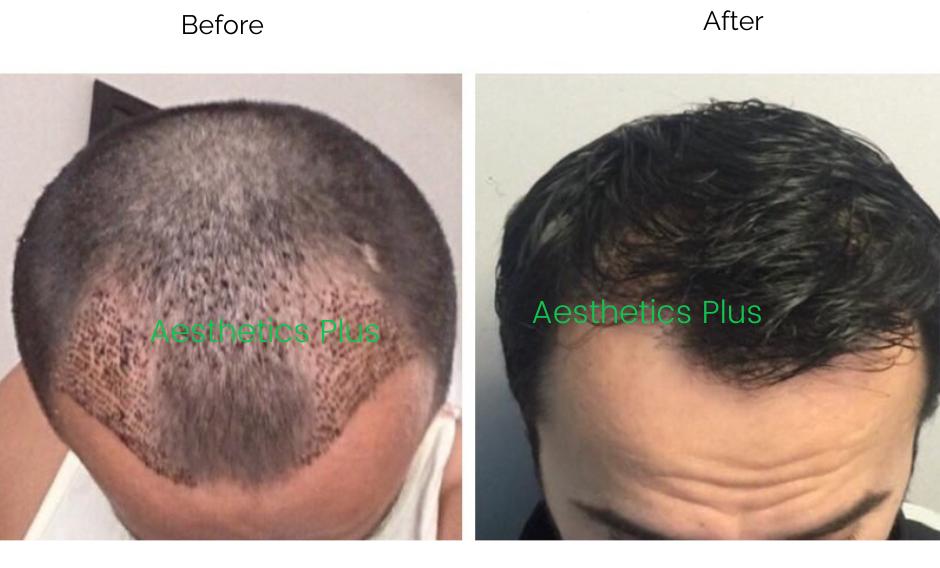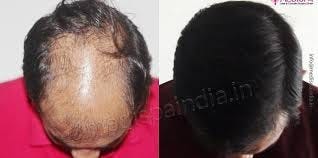1. What are the components of hair transplant surgery?
Hair transplant surgery, a medical intervention, entails relocating hair follicles from a donor site — often the plentiful back or sides of the scalp — to areas experiencing hair loss or thinning, typically the scalp. Its primary goal is to address conditions like baldness, hair loss, or thinning hair, with the aim of reinstating natural hair growth and enhancing the patient’s overall hair aesthetics. Executed by specialized medical practitioners, the procedure can employ diverse techniques, including Follicular Unit Transplantation (FUT) and Follicular Unit Extraction (FUE), tailored to meet individual needs and preferences.

What is the typical discomfort level associated with hair transplant surgery?
Hair transplant surgery typically involves the administration of local anesthesia to numb both the areas where hair follicles are harvested (usually the back or sides of the head) and where they will be transplanted (typically the scalp). As a result, patients should not experience significant pain during the procedure itself.
At The Face Centre, patients undergoing hair transplant surgery receive the benefits of advanced techniques and personalized care, ensuring a comfortable experience throughout the procedure. The skilled professionals at The Face Centre prioritize patient comfort, utilizing local anesthesia effectively to minimize discomfort during the surgery.
Acknowledging that some discomfort, such as a sensation of pressure or pulling, may be experienced during hair transplant surgery is important. However, patients typically do not describe this sensation as painful. Following the procedure, once the anesthesia wears off, mild pain, swelling, or soreness may occur at both the donor and recipient sites. Fortunately, these post-operative symptoms can usually be effectively managed with over-the-counter pain medications prescribed by your surgeon.
It’s important to recognize that pain tolerance and experiences vary among individuals. Therefore, it’s advisable to discuss any concerns or questions about pain management with your surgeon before the procedure. Overall, hair transplant surgery is considered a relatively low-pain procedure compared to more invasive surgeries, with many individuals finding the discomfort manageable and temporary.
If you’re contemplating a hair transplant procedure, seeking consultation with a trusted clinic such as The Face Centre can offer invaluable guidance on pain management strategies, ensuring a comfortable experience throughout the process. The Face Centre prides itself on its team of experienced professionals who prioritize patient comfort and satisfaction, delivering personalized care tailored to individual needs.
2. What are the potential side effects of hair transplant surgery?
During hair transplant surgery, patients are usually given local anesthesia to numb the areas where hair follicles are harvested (typically the back or sides of the head) and where they will be transplanted (usually the scalp). As a result, patients should not feel pain during the procedure itself.
At The Face Centre, patients undergoing hair transplant surgery receive advanced techniques and personalized care, ensuring a comfortable experience throughout the procedure. The skilled professionals at The Face Centre prioritize patient comfort and effectively use local anesthesia to minimize discomfort during the surgery.

It’s essential to keep in mind that pain tolerance and experiences differ among individuals. Therefore, it’s recommended to discuss any concerns or queries regarding pain management with your surgeon before the procedure. Generally, hair transplant surgery is considered to be a low-pain procedure when compared to more invasive surgeries. Most individuals find any discomfort to be manageable and temporary.
If you’re considering a hair transplant procedure, consulting with a reputable clinic like The Face Centre can provide valuable insights into pain management strategies and ensure a comfortable experience throughout the process. At The Face Centre, experienced professionals prioritize patient comfort and satisfaction, offering personalized care tailored to individual needs.
3. What are the potential side effects of hair transplant surgery?
While hair transplant surgery is generally deemed safe and effective, like any medical procedure, it carries potential side effects and risks that should be considered. Being aware of these factors before undergoing the procedure is crucial. Some possible side effects and considerations include:
1. Pain and Discomfort: It’s common to experience mild pain, swelling, and soreness at both the donor and recipient sites following hair transplant surgery. However, these discomforts are typically temporary and can be effectively managed with pain medications.
2. Scarring: With the Follicular Unit Transplantation (FUT) method, there is a possibility of a linear scar where the donor strip was removed. However, modern techniques prioritize minimizing scarring, often resulting in a less noticeable appearance that can be concealed by surrounding hair.
3. Infection: Although rare, infection at the surgical sites is a potential risk following hair transplant surgery. Strict adherence to post-operative care instructions can greatly minimize this risk and promote proper healing.
4. Bleeding: It’s common to experience some bleeding during and after hair transplant surgery. However, this bleeding is typically minor and resolves on its own without causing significant issues.
5. Swelling: Swelling around the forehead or eyes is a common occurrence after hair transplant surgery, but it usually resolves within a few days. This is a temporary side effect and should not cause concern.
- Numbness: Temporary numbness or reduced sensation in the donor and recipient areas is normal following hair transplant surgery. However, sensation typically returns gradually as the healing process progresses.
6. Shock Loss: Temporary shedding of existing hair near the recipient area, known as shock loss, can occur after hair transplant surgery due to the trauma of the procedure. However, this phenomenon is typically temporary, and new hair growth should occur as part of the natural healing process.

8. Unnatural-Looking Results: Occasionally, the transplanted hair may not blend seamlessly with the surrounding hair, resulting in an unnatural appearance. This can be due to factors such as improper graft placement, inadequate density, or mismatched hair characteristics between donor and recipient areas.
9. Cysts: After hair transplant surgery, small cysts may occasionally develop at the recipient sites. While typically harmless, these cysts can be treated if necessary to ensure optimal healing and cosmetic outcomes.
10. Hiccups in Hair Growth: Following a hair transplant, it’s crucial to exercise patience as the final outcome may not manifest immediately. It typically takes several months to a year for the transplanted hair to grow fully and attain its desired density and appearance. Initially, the hair might seem thin or scarce, but with time and diligent care, it should progressively thicken and seamlessly integrate with the existing natural hair.
11. Allergic Reactions: Although uncommon, it’s essential to note that certain individuals may develop allergic reactions to medications used during hair transplant surgery. Therefore, it’s crucial to inform your surgeon about any known allergies or sensitivities beforehand to mitigate potential risks associated with the procedure.
